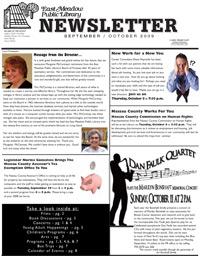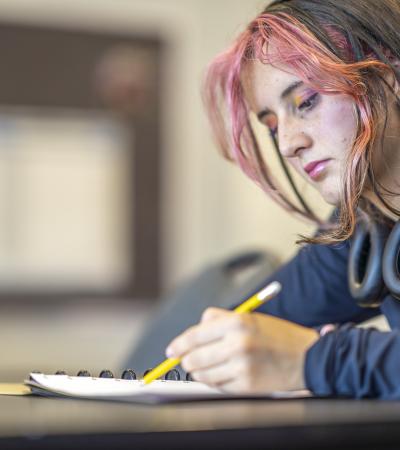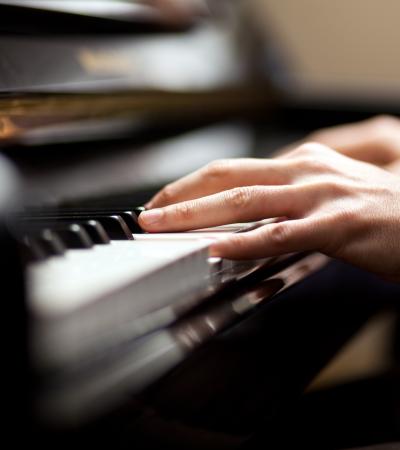Editor’s note: This is the final entry in a three-part series by Jude Schanzer. Read the first entry and the second entry.
At a recent conference for a grant I was fortunate enough to receive, a librarian came up to me and asked me to describe my job. I told him that the closest I could come would be to say that I was an artistic director. If you follow that train of thought, directors create events. Each event stretches beyond the walls of your performance or gallery spaces. As soon as we have an idea for a program, we have put our event in motion. When we put forth publicity for whatever we are presenting, we have begun to stimulate the expectations of our audience. Now it is an afternoon or evening out. Do they go to dinner before or after? Do they get dressed up? Do they bring a friend? What do they talk about afterward? Probably what they have just seen. In some way, we have made their day. Hopefully, it is a good day.
Just the other day a comedian called me. He wanted to do a program at the library. His way of ingratiating himself to me was to say that he has been at ALL the other surrounding libraries and our patrons have gone up to him asking why he hadn’t been to East Meadow Public Library. He then said, “They complain that you give nothing but poetry readings and free blood pressure screenings.” (You just can’t make this stuff up.) Well, there is nothing wrong with a good poetry reading; I have one scheduled for the end of May. And, yes, once in a while we do have free blood pressure screenings. It is a valuable service. Yet, clearly, this comedian hadn’t done much research and the only time he uses a library is to perform. I am truly glad that he performs in libraries, and (begrudgingly I admit) there is something of value in what he said.
The value of his words, though untrue and obnoxious, is that this is the perception many people have when they think of library programming. So, how do we change this image?
Quality, consistency, a healthy respect for the arts and artists, and a sincere interest in presenting what your constituency wants to experience are key factors in developing a following. If you only have the time, space, and funding for one concert a month, then do one concert a month. Perhaps book a classical concert in October, jazz or bluegrass (very American art forms) in November, or Renaissance music in December. There are plays that can be done and storytellers that are available. Feature an art show. I feel that the consistency will get your audience used to the availability of the arts at the library, and they will arrange their schedules to be at your event.

You don’t need an actual theatre. It is nice, but if you have a community or multipurpose room, that will do. I do not have a theatre (a very sore point for me). Yet, the artists I employ, some of whom perform at Lincoln Center, Carnegie Hall, or on Broadway, make do with what we have. Often it is the most successful and best known of the artists coming to the East Meadow Public Library who enjoy the small room and the intimacy that it dictates. For many of them, that intimacy has disappeared from some of their performances because many of the other venues are so large and formal. I am a big fan of “Use your disadvantages to your advantage.” My small room with not-so-great sight lines is a gem because the audience and the performers are on the same plane. The artists talk with the audience, and the audience members are extremely comfortable with the artist. You don’t often get the chance to sit around and talk with the performer after a performance at a major venue. At the library you can.
The first Sunday of every month is an opening reception for our monthly art show in our community room. The art is hung on the walls or sits on pedestals. We have a musician play at each opening and light refreshments. Sometimes folks only come for the food and some for the music, but I always make sure they at least acknowledge the art on the walls. Recently, one person was completed fixated on the food, so through gritted teeth I said, “Look at the art on the walls.” He actually looked up and in complete surprise said, “Oh. Look at that.” I really don’t think he saw the art when he walked in, but after he did, he walked around, looked, liked it, and actually bought a piece. Sometimes we just have to be here for people to find something they can enjoy, though it might be right in front of their noses.
Of course this can all be expensive, or at least more than your budget will allow. It is for me. It seems that I never hear the word “budget” without the qualifier “over” in front of it. So, I write grants. Try applying to the state arts council, the humanities council, to ALA for many of their programming projects, to foundations, and businesses. Go for legislative grants; usually that takes nothing more than a letter to your state assemblyperson. If you have patience and stamina, go to Grants.gov and register to become eligible for federal grants; it is worth the time and trouble. When a patron wants to do something in a loved one’s memory, I suggest a program because they are personal and powerful and alive. It is possible to combine projects. We were very lucky to receive the “Visions of the Universe” grant from ALA and the Space Telescope Science Institute. We hope to integrate a multimedia performance piece based on the Hubble Telescope photos through funding from the Mid Atlantic Arts Foundation, and additional programming from an Institute for Museums and Library Services grant. The maddening part is waiting to hear if your have been successful in getting funding. Nothing risked, nothing gained. In my mind, all areas are fodder for presenting the arts, and all funding possibilities should be explored.
The last, and perhaps most essential, ingredient to a successful arts calendar is passion for the arts and your mission. It is important for all of us to believe that what we do is important. For this endeavor, you must also believe in the importance and value of the arts. They bring us joy and, yes, sorrow. They open us up to new possibilities and interests. The arts awaken our hindsight, insight, and foresight. The arts are at home at the library and we should make the library their home.



